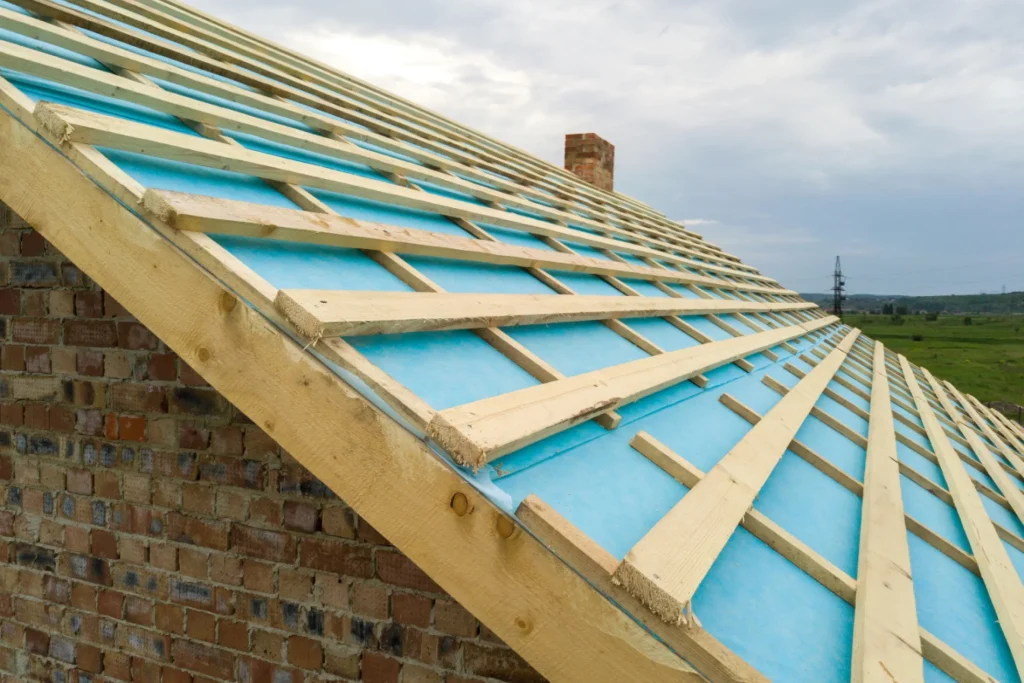When it comes to roofing, metal roofs have gained popularity for their durability and longevity. If you’re considering upgrading your shingle roof to a metal roof, you’re in the right place. In this comprehensive guide, we’ll take you through the process of how to install a metal roof over a shingle roof, ensuring a successful and long-lasting transition.

Benefits of Installing a Metal Roof Over Shingles
Before we dive into the installation process, let’s understand why this transition is an excellent choice for many homeowners.
- Cost-Efficiency: Installing a metal roof over existing shingles can be more cost-effective than a complete tear-off and replacement. You save on labor and disposal costs.
- Reduced Environmental Impact: Reusing the existing shingles is an eco-friendly choice. It prevents old shingles from ending up in landfills.
- Added Insulation: The layer of shingles can provide an additional insulating barrier, helping to regulate temperature and reduce energy costs.
- Enhanced Durability: Metal roofs are known for their longevity, and adding them over shingles can increase the overall strength and durability of your roof.
Step 1: Prepare Your Roof
Before you start installing a metal roof over shingles, ensure your roof is in good condition. Inspect for any damage, leaks, or sagging areas. If there are issues, address them before proceeding. It’s also essential to clean the existing shingles and remove any debris.
Step 2: Measure and Order Materials
Accurate measurements are crucial for ordering the right amount of metal roofing material. Measure the roof’s square footage, including the pitch or slope. Once you have these measurements, consult with a roofing supplier to order the appropriate amount of metal panels, underlayment, and other necessary materials.
Step 3: Safety Precautions
Safety should be a top priority during any roofing project. Ensure you have the necessary safety gear, such as harnesses, non-slip shoes, and helmets. It’s also advisable to have a partner to assist you and for safety reasons.
Step 4: Install Underlayment
The underlayment is a crucial layer that provides an additional barrier against moisture. Roll out the underlayment over the existing shingles and secure it to the deck. Make sure it overlaps correctly to prevent water infiltration.
Step 5: Install Battens
Battens are wooden strips or metal rails that create an air gap between the metal roof and the shingles. This gap promotes proper ventilation and prevents moisture buildup. Install the battens horizontally, perpendicular to the roof’s slope, and secure them to the deck.
Step 6: Install the Metal Roof Panels
Now comes the most critical part – installing the metal roof panels. Start at one corner of the roof and work your way up. Secure the panels using screws or clips, following the manufacturer’s instructions. Ensure that each panel overlaps correctly to prevent leaks.
Step 7: Flashing and Edging
Proper flashing and edging are essential to seal vulnerable areas, such as roof edges, valleys, and penetrations like chimneys or vents. Install flashing and edging according to the manufacturer’s guidelines, ensuring a watertight seal.
Step 8: Finish with Ridge Cap
The ridge cap is the final piece of the puzzle. It covers the roof’s peak, ensuring that this area is secure and weatherproof. Secure the ridge cap in place, and your metal roof installation is complete.
Conclusion: A Durable Roofing Upgrade
Transitioning from a shingle roof to a metal roof can greatly enhance your property’s longevity and energy efficiency. By following these steps on how to install a metal roof over a shingle roof, you can enjoy the benefits of a durable, eco-friendly, and cost-effective roofing solution. However, it’s important to note that this project may be complex and is often best left to experienced roofing professionals for a successful and long-lasting result.



Leave a Reply